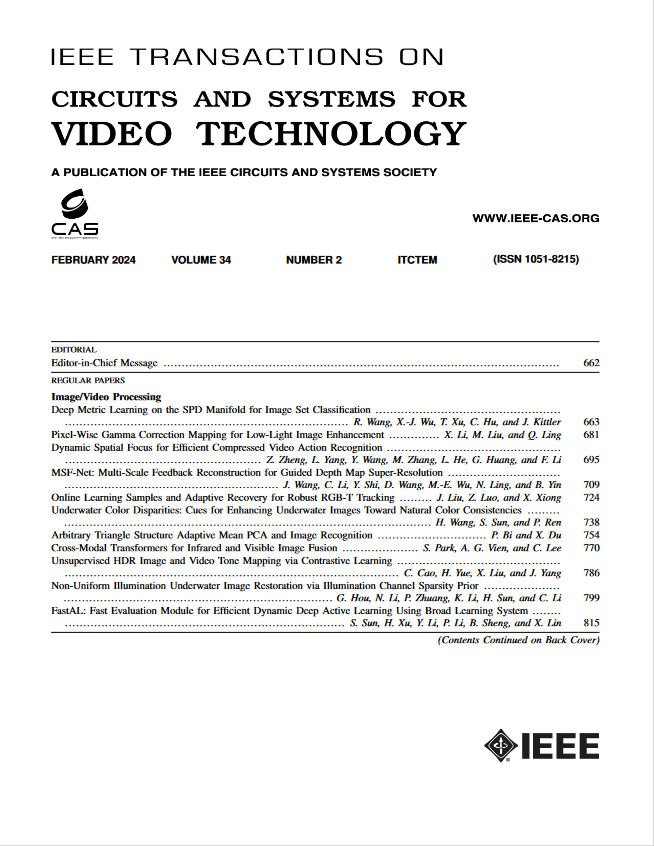稀疏点云辅助学习图像压缩
IF 8.3
1区 工程技术
Q1 ENGINEERING, ELECTRICAL & ELECTRONIC
IEEE Transactions on Circuits and Systems for Video Technology
Pub Date : 2024-12-26
DOI:10.1109/TCSVT.2024.3522621
引用次数: 0
摘要
在自动驾驶领域,存在多种传感器数据类型,每种类型代表同一场景的不同模式。因此,利用其他传感器的数据进行图像压缩是可行的。然而,很少有技术探索利用模态间相关性来提高图像压缩性能的潜在好处。在本文中,受最近学习图像压缩成功的启发,我们提出了一个新的框架,该框架使用稀疏点云来辅助自动驾驶场景中的学习图像压缩。我们首先将3D稀疏点云投影到2D平面上,得到稀疏深度图。利用这个深度图,我们继续预测相机图像。随后,我们使用这些预测图像提取多尺度结构特征。然后将这些特征作为附加信息合并到学习图像压缩管道中,以提高压缩性能。我们提出的框架与各种主流的学习图像压缩模型兼容,并使用不同的现有图像压缩方法验证了我们的方法。实验结果表明,在压缩管道中加入点云辅助可以持续提高压缩性能。本文章由计算机程序翻译,如有差异,请以英文原文为准。
Sparse Point Clouds Assisted Learned Image Compression
In the field of autonomous driving, a variety of sensor data types exist, each representing different modalities of the same scene. Therefore, it is feasible to utilize data from other sensors to facilitate image compression. However, few techniques have explored the potential benefits of utilizing inter-modality correlations to enhance the image compression performance. In this paper, motivated by the recent success of learned image compression, we propose a new framework that uses sparse point clouds to assist in learned image compression in the autonomous driving scenario. We first project the 3D sparse point cloud onto a 2D plane, resulting in a sparse depth map. Utilizing this depth map, we proceed to predict camera images. Subsequently, we use these predicted images to extract multi-scale structural features. These features are then incorporated into learned image compression pipeline as additional information to improve the compression performance. Our proposed framework is compatible with various mainstream learned image compression models, and we validate our approach using different existing image compression methods. The experimental results show that incorporating point cloud assistance into the compression pipeline consistently enhances the performance.
求助全文
通过发布文献求助,成功后即可免费获取论文全文。
去求助
来源期刊
CiteScore
13.80
自引率
27.40%
发文量
660
审稿时长
5 months
期刊介绍:
The IEEE Transactions on Circuits and Systems for Video Technology (TCSVT) is dedicated to covering all aspects of video technologies from a circuits and systems perspective. We encourage submissions of general, theoretical, and application-oriented papers related to image and video acquisition, representation, presentation, and display. Additionally, we welcome contributions in areas such as processing, filtering, and transforms; analysis and synthesis; learning and understanding; compression, transmission, communication, and networking; as well as storage, retrieval, indexing, and search. Furthermore, papers focusing on hardware and software design and implementation are highly valued. Join us in advancing the field of video technology through innovative research and insights.

 求助内容:
求助内容: 应助结果提醒方式:
应助结果提醒方式:


